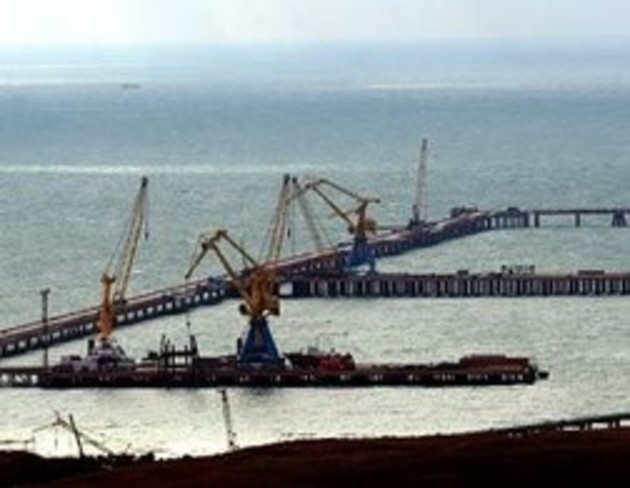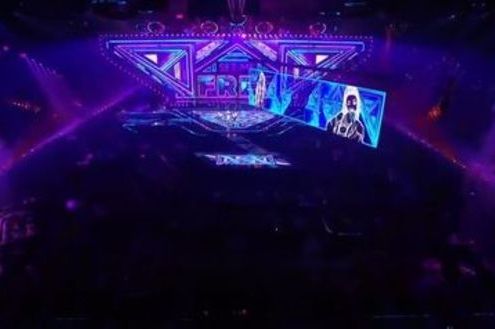Pavel Martynov, exclusively to VK
Recently it was reported that Russia intends to offer Kazakh companies handling their cargo through Ukraine and the Baltic states to invest in the construction of the port of Taman, the infrastructure of which requires 40 billion rubles. Taman may be of interest to Kazakh companies as an alternative to the ports of Ukraine and the Baltic states to reduce shipping costs. They will be invited to build terminals for transshipment of petroleum products, LPG, metals, grains and sulphur, as well as to participate in the concession for the construction of federal property facilities.
According to the Minister of Transport, Maxim Sokolov, the establishment of dry cargo sea port of Taman continuing until 2025 is the largest project developed by the Ministry of Transport. Since 2019 the total increase in port capacity for handling will be 94 million tons of dry cargo.
Commissioned by the Ministry of Transport in 2012 by a consortium of leading Russian and Dutch design companies, the design documentation was be developed, necessary approvals were be received, including environmental assessment, and the project is at Glavgosexpertiza to confirm the details.
The design solution will allow for year-round operation. "This is very important”, Sokolov says, “because we always have to keep in mind the factor of the Black Sea, where the storm load can be up to 60 days a year. And the experience of handling at the ports of Sochi and in other ports of the Black Sea suggests that this is indeed a real factor that should be borne in mind."
Rejecting the raid overload, Taman will accommodate vessels of up to 180,000 tons. This is the approximate maximum amount that can pass at the entrances of the Bosphorus and the Dardanelles.
The essential characteristic of the port, according to the minister, is its complementary position to the projects of other ports covering the deficit of the bandwidth of external access routes. The port of Taman does not compete with other projects, but rather complements them significantly.
It is planned to build 10 marine terminals for handling of cargo, containers, transshipment of iron ore, two coal terminals, a terminal for transshipment of metals as well as for the handling of sulphur and grain.
The cost of construction of the port in view of private property and the plans of investors as a whole is estimated at 228 billion rubles. In this case, federal property in accordance with the design documentation, which today is under examination, is 115 billion rubles in 2013 prices. The volume of the federal budget provided for the Federal Program "Development of the Transport System" is 76 billion dollars. The remaining deficit is about 40 billion, and it will be held by a public-private partnership, mixed funding from extra-budgetary sources. Private investors’ funds will be sent, among others, to the establishment of facilities for the transshipment terminal facilities, it is 112 billion rubles.
According to the Ministry of Transport, the project will have a positive fiscal effect amounting to 114 billion rubles by 2030. The project has the best performance indicators for investing capacity per unit produced. If you compare it with other ports, such as Novorossiysk, one added ton is 7,250 rubles of total planned investments, the project of "Taman" - 2400, the port of Ust-Luga - 3185, Sabetta - 4500.
Speaking directly about the budgetary investments per ton of cargo, in Taman it is 810 rubles of public investment, in Novorossiysk - 2800, in Ust-Luga the figure is even a little less - 720 rubles, Sabetta - almost 3,000 rubles per ton added.
The Transport Ministry reports that the main constraint to the development of all the ports of the Azov-Black Sea basin and the implementation of all the new projects is the railroad. In accordance with the development plans of the approach routes until 2020 (and it corresponds with the investment program of Russian Railways and the Federal Target Program) there will be funds amounting to 163 billion rubles, including 88 billion rubles from the federal budget; it will increase capacity by 2020 – including the far entrances from Saratov – by approximately 65 million tons.
These plans correspond not only to the development plans of the port of Taman, Novorossiysk, but with plans to build another port, the so-called Taman bulk cargo terminal, which is planned to be built by a private investor in the same general area, near the port of Taman.
And according to these plans, the expansion of port capacity is planned at 30 million tons from 2018. This cargo base, in accordance with the investment declaration filed by the investor, is precisely designed for cargo arriving in transit from Kazakhstan. Russian coal producers in the proportion of 30 million had only 8,000,000 tons, and the remaining cargo base is formed both with coal and with sulphur and iron-ore raw materials directly in Kazakhstan.
The declared cost of the project is 23 billion rubles, but the investor has already implemented the first part, the first draft of the oil terminal capacity of 20 million tons. However, the funds that have been spent on the project are significantly greater than the stated amount and are about 45 billion rubles.
Meanwhile, according to Vladimir Yakunin, the most complex object here will be the electrification of the railway infrastructure on the Taman Peninsula: "We are already in negotiations with the Federal Grid Company. It seems that they confirm that they have plans to build facilities that will ensure that electrification ... Cargo base assessment, the assessment of the prospects of development allows you to make a conclusion on the need for additional infrastructure on the sea coast of Taman. And, as we have some experience in Ust-Luga, we see that, in principle, probably everything will happen following a similar scheme."
However, according to RBC, despite the increased attention of the state for the construction of the seaport of Taman, the project is barely moving forward. Of the at least 300 hectares of land needed, the company managing the ports has bought only 2 hectares, having spent a total of 60 million rubles. And while most investors are willing to wait, some of them are already refusing to build their own terminal.
Nevertheless, investors have confirmed their interest in the formation of the cargo base, and in the construction of the terminal in the port. Right now the volume of applications for the construction of the terminal as a whole is almost 20% more than its rated capacity, the selection of investors will be made on a competitive basis. Interest in the port of Taman was apparently shown by UCL Holding, Global Ports, SUEK, Metalloinvest, KRU, Evrohim, Rusal and Uralkali, Gazprom export, as well as KazMunaiGas, Kazakhmys, ENRC and Arcelor Mittal Temirtau.






